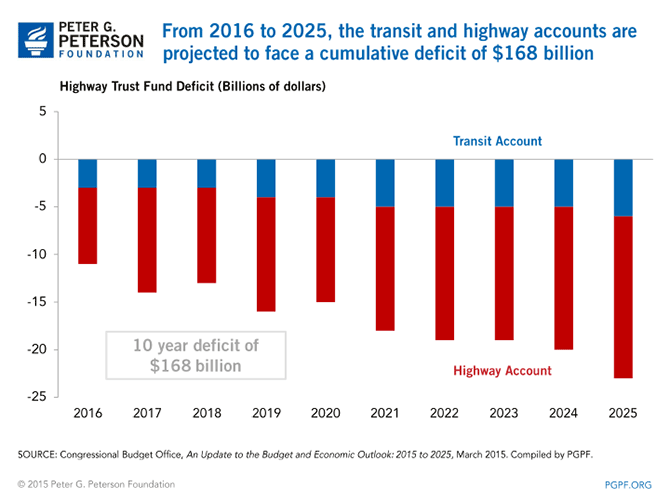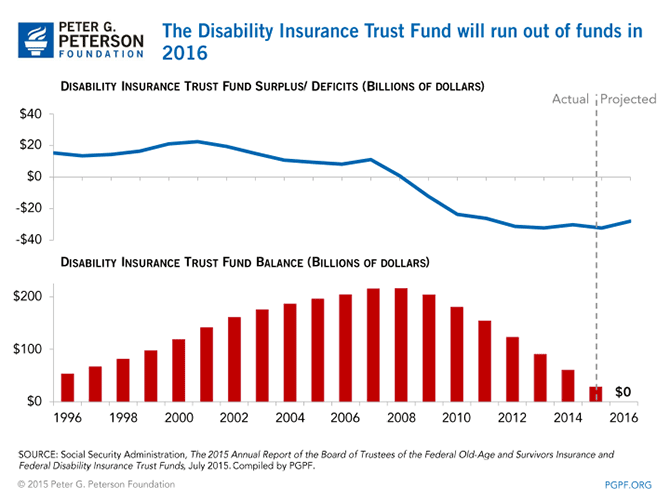You are here
Happy Fiscal New Year 2016
October 1 marks the beginning of a new fiscal year for the federal government, and policymakers face a number of important fiscal and budgetary issues. Within the next three months, lawmakers must address the debt ceiling and provide additional funding for the government. Without action on the debt ceiling, the federal government could default on some of its obligations soon after November 5. And on December 11, the stopgap funding measure which was enacted on September 30 to prevent a government shutdown will expire.
Lawmakers should use the opportunities presented by the annual budgetary process to set policy priorities and provide more certainty about our nation’s fiscal policy. The stakes are high, for our budget and our economy. Despite recent reductions in short-term deficits, the nation continues to face serious long-term fiscal challenges that threaten economic growth and undermine economic opportunity. To provide a solid foundation for economic prosperity, lawmakers need to come together and agree on a plan that puts our nation’s budget on a sustainable long-term path.
Fiscal Year 2015 — Looking back
The prior fiscal year witnessed notable fiscal achievements, but none of them addressed our unsustainable long-term fiscal challenges.
Congress and the administration agreed on eliminating the Medicare Sustainable Growth Rate (SGR) formula — a problematic formula that required Congress to pass legislation every year to prevent large, automatic reductions in reimbursements to physicians serving Medicare patients.
Congress also passed a budget resolution for the first time in five years, but did so on a partisan basis and failed to pass regular appropriations bills before the start of the new fiscal year. In fact, the last time lawmakers passed all of its regular appropriations bills before the beginning of the fiscal year was nearly 20 years ago. Although Congress passed a continuing resolution (CR) on September 30 to prevent a government shutdown on October 1, this stopgap measure funds the government only until December 11, 2015. Without additional legislative action by that date, the government will once again face a shutdown.
Fiscal Year 2016 — To-Do List
Lawmakers face a number of urgent tasks over the coming months:
- October 29, 2015 — Highway Trust Fund: Congressional action will be necessary by this date to address the expiration of numerous programs funded by the Highway Trust Fund (HTF), including infrastructure loans and reimbursements to states.

- November — Debt Ceiling: The current debt limit was reached in March 2015. Since then, the Treasury Department has utilized “extraordinary measures” to avoid defaulting on its obligations. The Treasury expects to exhaust those measures on November 5, and will then be forced to rely solely on its available cash to pay its bills. Without legislative action, the Treasury will be unable to pay all of its obligations sometime thereafter. To avoid this economically damaging scenario, lawmakers must act soon to raise or suspend the debt limit.
- December 11, 2015 — Continuing Resolution: Lawmakers passed a continuing resolution on September 30 that provides appropriations for discretionary programs, but only until December 11. To prevent a government shutdown, lawmakers will need to pass additional legislation on or before that date.
- December 31, 2015 — Expired Tax Provisions: Lawmakers will face important decisions about whether to renew 60 tax provisions that expired on December 31, 2014 and 3 provisions that expired on September 30, 2015. Many of these provisions are popular, such as the tax credit for research and experimentation. Other provisions are more controversial, such as the special provisions for business depreciation of capital expenses. Many of these provisions have faced expiration dates every year for the past several years, but they have been extended by policymakers for one year at a time. This situation creates unnecessary uncertainty about U.S. tax policy, often undermining the policy rationale for enacting them – if the tax provisions are supposed to create incentives for certain favored activities during the year, it is ineffective to enact those provisions at the end of the year. Instead of continuing to set tax policy with stopgap measures, lawmakers should work toward broad, long-term tax reform that provides more clarity and certainty for individuals and businesses.
- April 15, 2016 — Budget Resolution: Congress faces a statutory deadline for adopting a budget resolution for fiscal year 2017. Last year’s budget resolution was supported by members of only one party. Lawmakers should work together to adopt and develop a bipartisan blueprint for the 2017 budget resolution.
- End of 2016 — Social Security Disability Insurance Trust Fund Exhaustion: Social Security’s trustees project that Social Security’s Disability Insurance Trust Fund will be exhausted next year. Without legislative action, the program could face a funding shortfall of 19 percent, making it unable to pay full benefits to the approximately 11 million disabled people and their families served by the program. Congress will need to address the program’s financial imbalance soon to avoid significant disruption to the program’s beneficiaries.

Conclusion
By delaying debates on important matters such as the Highway Trust Fund, Social Security funding and tax policy, lawmakers create unnecessary uncertainty about fiscal policy, limit the options for addressing our fiscal problems, and increase the cost of reforms. There is nothing to gain from the damaging fiscal brinksmanship of recent years. In a study funded by the Foundation in 2013, Macroeconomic Advisers estimated that fiscal uncertainty from 2009 to 2013 raised unemployment by 0.6 percentage points — the equivalent of 900,000 lost jobs.
Moreover, the longer we delay fiscal reforms, the more significant the changes will have to be. Under CBO’s alternative fiscal scenario, PGPF estimates that taking action in 2016 to begin to stabilize the debt would require changes to revenue and/or spending of a total of 3.2 percent of GDP. If action is delayed just 5 years, this number climbs by nearly 25% to 4.0 percent of GDP.
The approaching fiscal deadlines and the congressional budget process provide opportunities for lawmakers to work through their differences, set priorities, and work together on a sensible plan to address vital short term deadlines and implement long term reforms that will put our nation on a more sustainable and prosperous fiscal and economic path.
